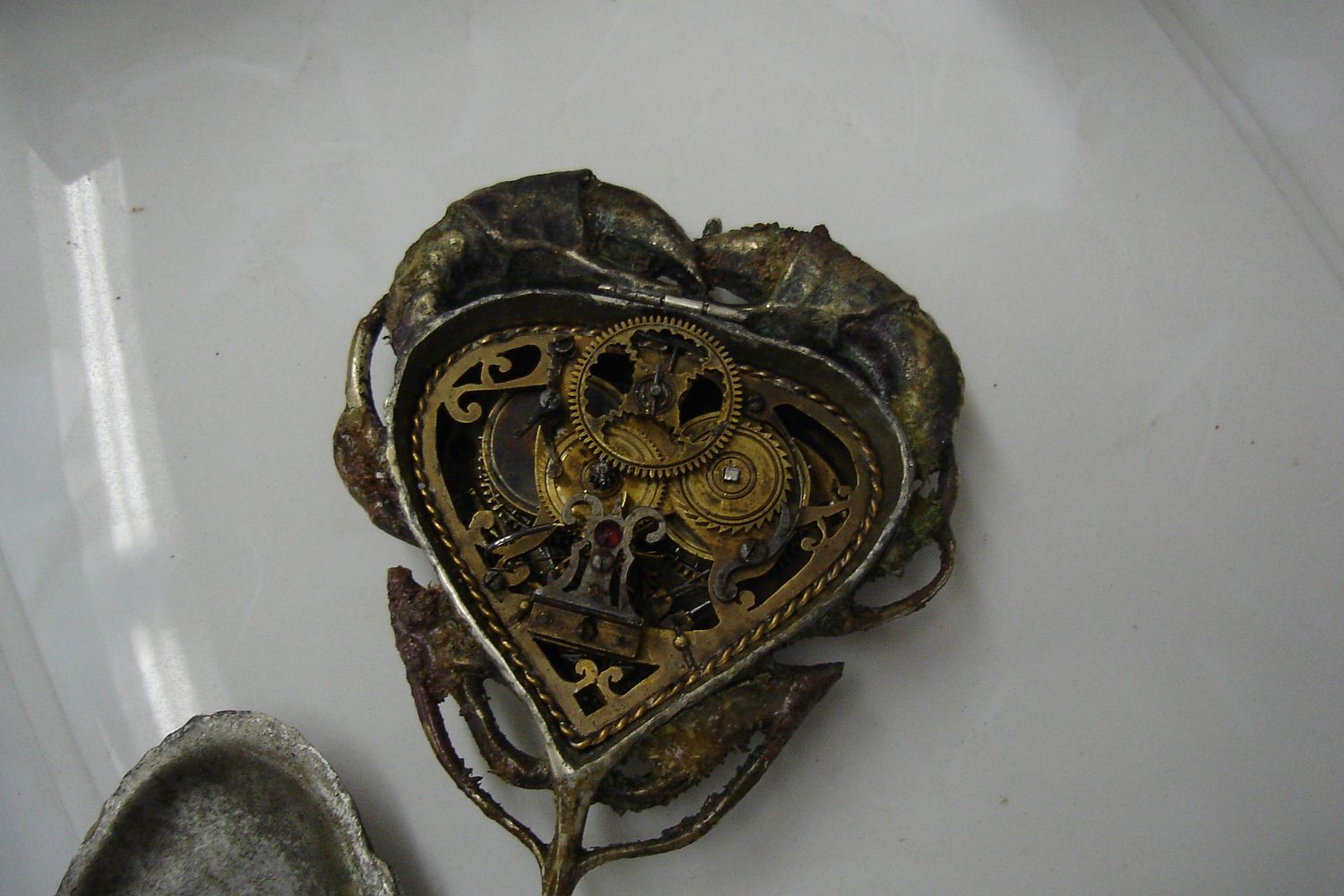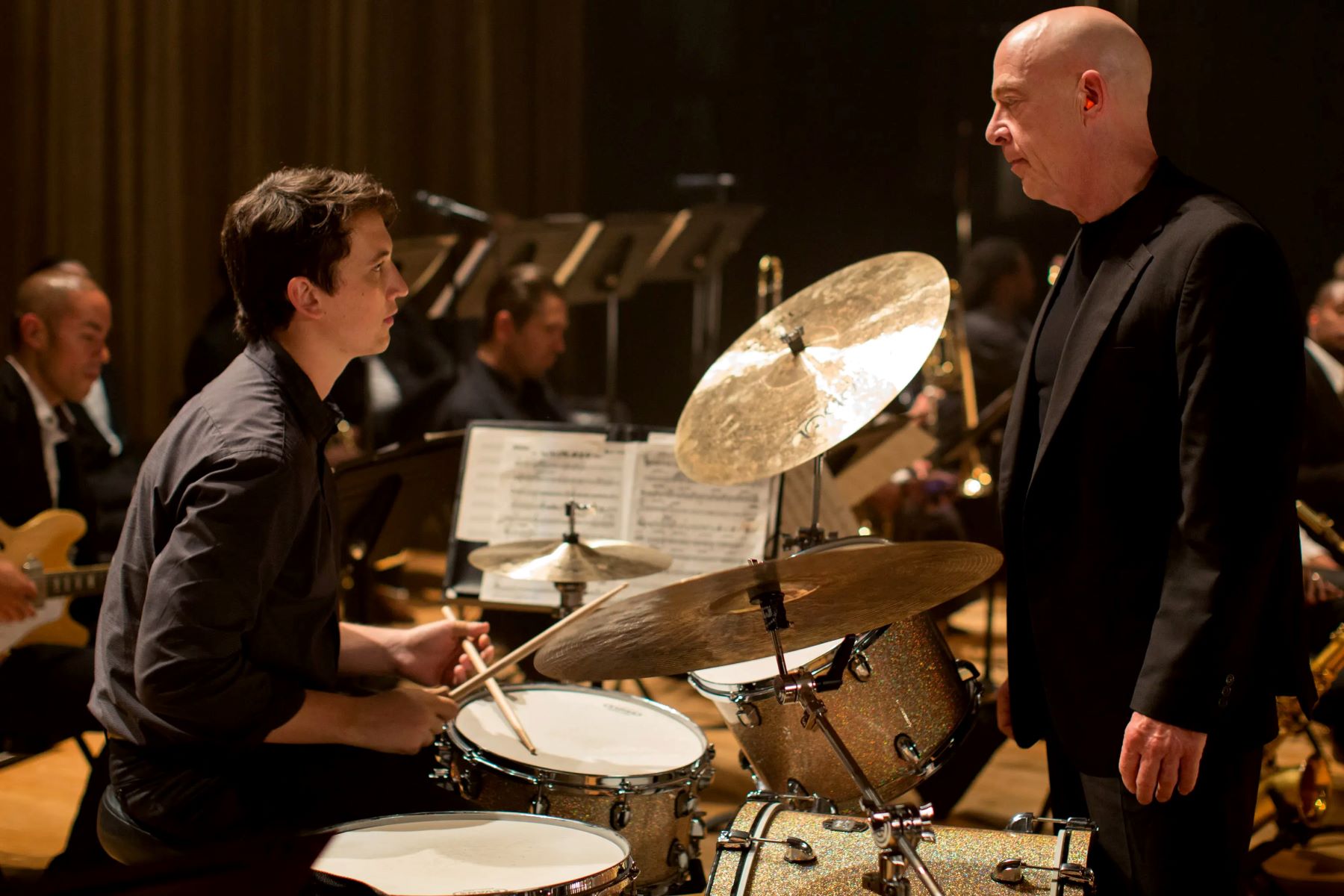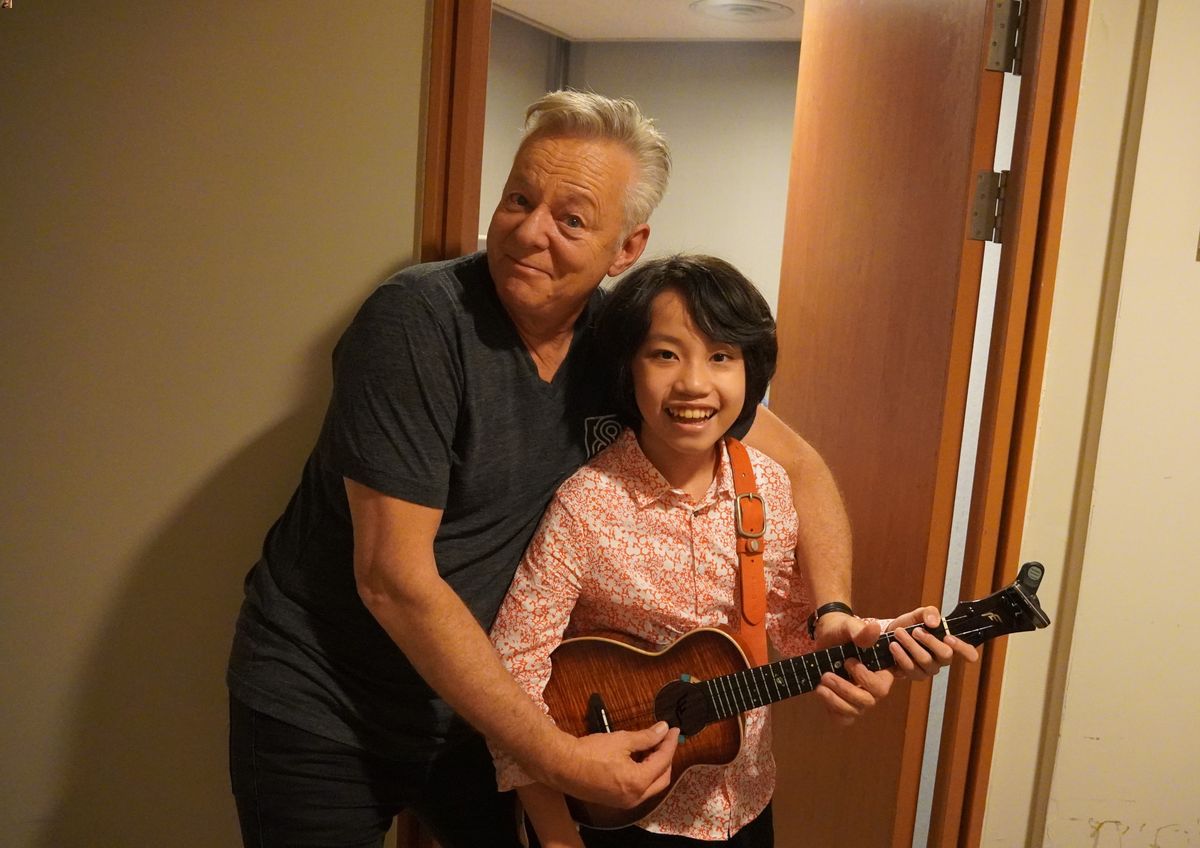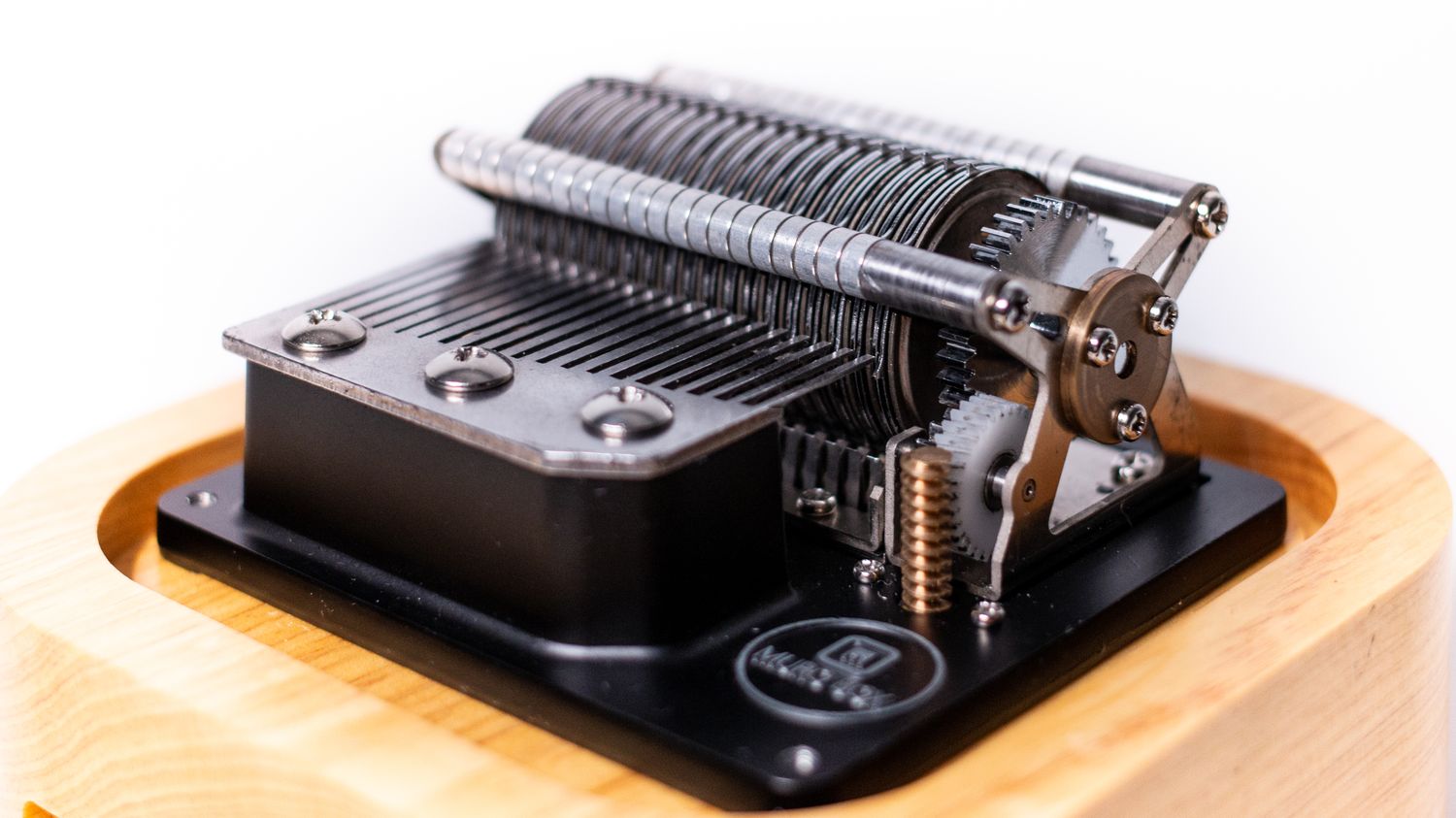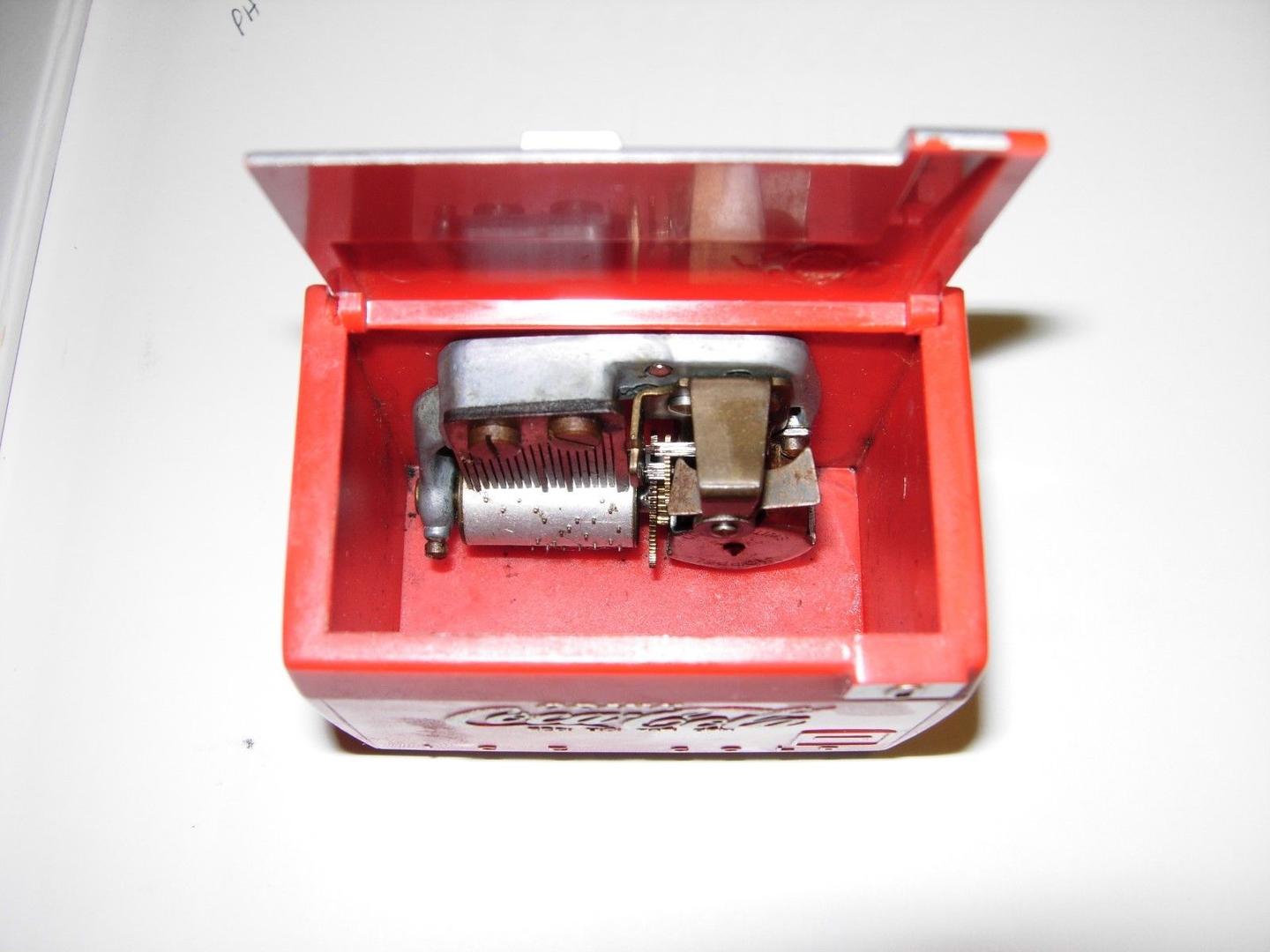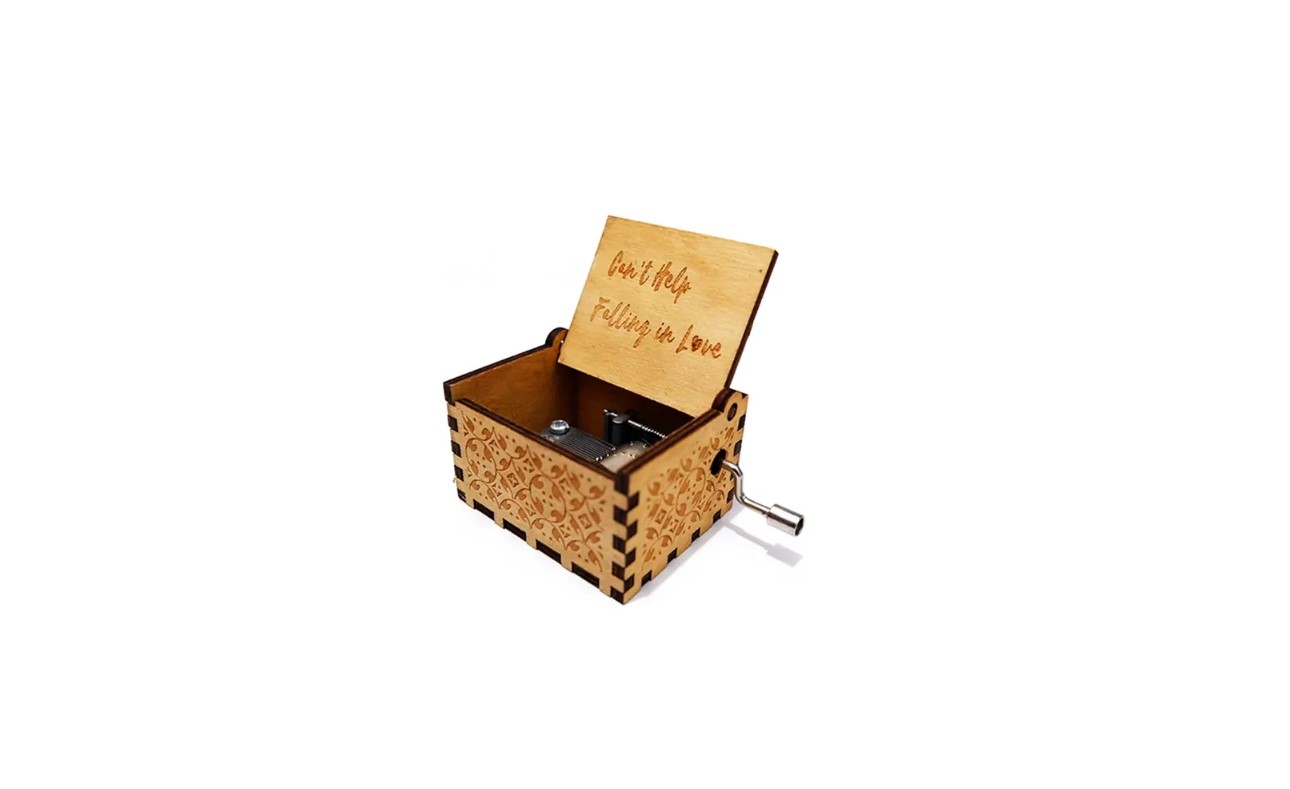Home>Devices & Equipment>Music Box>Who Plays The Music Box
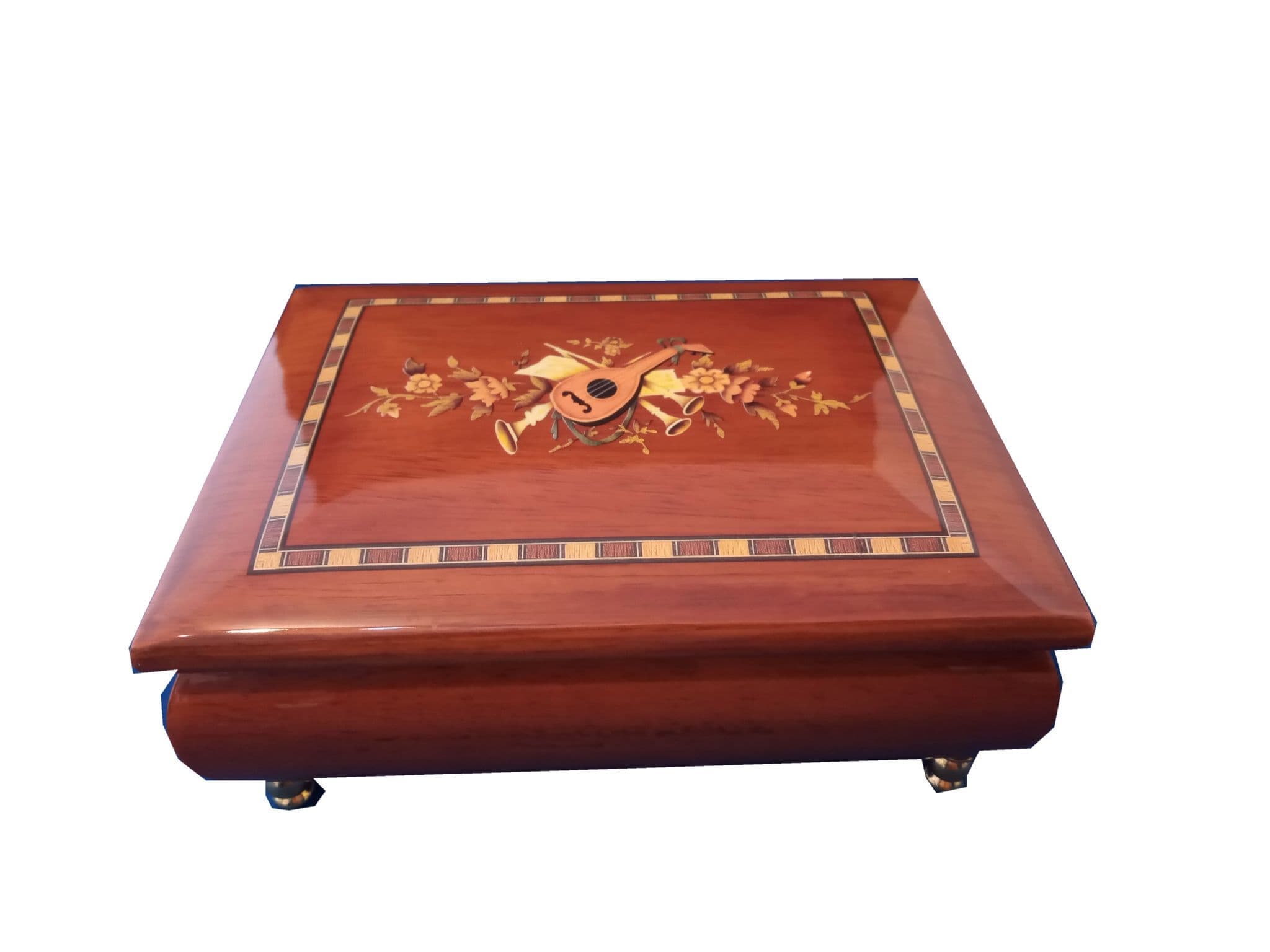

Music Box
Who Plays The Music Box
Modified: January 22, 2024
Discover who plays the mesmerizing music box and brings enchanting melodies to life. Immerse yourself in the captivating world of the music box.
(Many of the links in this article redirect to a specific reviewed product. Your purchase of these products through affiliate links helps to generate commission for AudioLover.com, at no extra cost. Learn more)
Table of Contents
Introduction
Music is an art form that has the power to touch our hearts and evoke a wide range of emotions. From the earliest times, humans have sought ways to create and enjoy music, and one of the most fascinating and charming musical instruments ever invented is the music box. These delightful devices have been enchanting people for centuries with their beautiful melodies and intricate mechanisms.
The music box, also known as a musical snuff box or musical automaton, is a small mechanical device that produces musical sounds when its internal mechanism is activated. It typically consists of a wooden or metal case containing a rotating metal cylinder or disk with tiny pins or metal prongs. As the cylinder or disk revolves, the pins or prongs pluck the tuned metal teeth or strings, creating a sequence of musical notes.
The origins of the music box can be traced back to the 18th century in Switzerland, where skilled craftsmen perfected the art of creating these musical treasures. Initially, music boxes were considered luxury items, owned only by the wealthy aristocrats who could afford them. However, with advancements in technology and mass production, music boxes became more accessible to the general public, spreading their enchanting melodies far and wide.
These charming instruments come in various shapes and sizes, ranging from small handheld snuff boxes to large, ornate table-top pieces. Some music boxes are designed to be portable, while others are meant to be displayed as decorative items. Regardless of their size or design, music boxes continue to captivate people with their delicate melodies and intricate craftsmanship.
Over the years, many skilled musicians and composers have been involved in the creation of music boxes. Their expertise and artistic contributions have greatly influenced the repertoire of music played on these enchanting instruments. From classical masterpieces to popular tunes, music boxes have showcased the talents of composers such as Mozart, Beethoven, and Chopin, among others.
In modern times, music boxes have found new uses and adaptations. They have become popular gift items, cherished heirlooms, and even inspiration for contemporary music. With advancements in technology, electronic music boxes have emerged, offering a wider range of melodies and customization options.
For enthusiasts and collectors, the world of music boxes offers a treasure trove of unique and valuable pieces. The art of collecting and restoring music boxes has gained a devoted following, with enthusiasts seeking out rare and antique pieces to preserve their historical and artistic significance.
Join us as we delve into the enchanting world of music boxes, exploring their history, types, musicians involved, popular songs, modern uses, and the art of collecting and restoring these delightful instruments.
The Origins of the Music Box
The history of the music box dates back to the 18th century in Switzerland, a country renowned for its precision engineering and watchmaking skills. It was during this time that skilled craftsmen began experimenting with mechanisms to create a device that could play music automatically.
The first known prototype of a music box was created around 1770 by Swiss watchmaker Antoine Favre. Favre designed a small cylinder with small pins that, when turned by a winding key, would pluck metal teeth, producing musical notes. This early version of the music box was relatively simple, playing only one tune and lacking the refinement and elegance of later designs.
However, it was another Swiss watchmaker, Abraham-Louis Breguet, who made significant advancements in the development of the music box. In the early 19th century, Breguet introduced a new type of music box mechanism known as the “musical snuff box.” These portable boxes were small enough to fit in the palm of one’s hand and were often adorned with intricate designs, making them highly sought after by the aristocracy.
As the popularity of music boxes grew, more craftsmen began producing their own versions, each incorporating their unique style and innovations into their designs. These early music boxes were primarily made of wood or metal and featured ornate engravings or paintings on the case, adding to their aesthetic appeal.
Initially, music boxes were considered a luxury item, owned only by the wealthy elite. However, with advancements in mass production techniques, they became more affordable and accessible to the general population. Music boxes gained popularity as decorative items in Victorian-era households, becoming a symbol of refinement and elegance.
Craftsmen in other countries, such as Germany and France, also began producing their own versions of music boxes, each adding their own artistic flair and innovations to the design. Music boxes became intricately crafted pieces, with movements that played multiple songs, offering a wider range of musical enjoyment.
While Switzerland remained a hub for music box production, the tradition spread to other countries, including the United States and Japan. Each region brought its own cultural influences and technological advancements to the art of music box production.
Today, music boxes continue to fascinate people worldwide, captivating with their intricate mechanisms and enchanting melodies. Whether modern electronic versions or cherished antique heirlooms, music boxes are a testament to the ingenuity and creativity of the craftsmen who brought this whimsical instrument to life.
Types of Music Boxes
Music boxes come in various types, each with its own unique features and characteristics. From small handheld snuff boxes to large, ornate table-top pieces, there is a music box to suit every taste and occasion. Here are some of the most common types of music boxes:
- Handheld Music Boxes: These compact music boxes are designed to be small enough to hold in one’s hand. Often crafted from precious metals or adorned with intricate designs, handheld music boxes were popular accessories during the 18th and 19th centuries, particularly among the upper classes.
- Table-top Music Boxes: Table-top music boxes are larger and more elaborate versions meant to be displayed as decorative pieces. These music boxes often feature intricate carvings or paintings on the casing, making them works of art in their own right. They are designed to be showcased on tables, shelves, or mantelpieces, adding a touch of elegance to any space.
- Jewelry Music Boxes: Jewelry music boxes combine the functionality of a traditional music box with a jewelry compartment. These boxes often have a mirrored lid and multiple compartments for storing jewelry, making them both practical and aesthetically pleasing. They are a favorite choice for those seeking a combination of music and storage for their precious accessories.
- Carousel Music Boxes: Carousel music boxes, also known as merry-go-round music boxes, are whimsical and charming. They feature a rotating carousel with beautifully crafted horses or other animals, accompanied by delightful melodies. Carousel music boxes are popular choices for children’s rooms or as nostalgic gifts for adults.
- Musical Snow Globes: Musical snow globes combine the enchantment of music with the beauty of a winter wonderland. These unique music boxes have a glass globe filled with water and glitter, with a figurine inside. When the music is activated, the figurine rotates, and the glitter swirls, creating a mesmerizing scene accompanied by a melodic tune.
Aside from these specific types, there are also music boxes designed for special occasions, such as music boxes with holiday-themed motifs for Christmas or romantic music boxes for Valentine’s Day. Additionally, there are music boxes that play specific genres of music, including classical, jazz, or popular songs.
Whether as a collectible item, a cherished gift, or a decorative piece for your home, the variety of music boxes available ensures there is a perfect music box for everyone’s taste and preferences.
Musicians and Composers Involved
Throughout history, many renowned musicians and composers have contributed their talents to the creation of music boxes. Their expertise and innovative compositions have helped shape the repertoire of music played on these charming instruments. Here are some notable musicians and composers who have been involved in the world of music boxes:
- Wolfgang Amadeus Mozart: Mozart, one of the most celebrated composers in history, composed several pieces specifically for music boxes. His composition “Musical Snuff Box” (K. 15pp) is a notable example, showcasing his ability to create enchanting melodies perfectly suited for these instruments.
- Ludwig van Beethoven: Beethoven, known for his masterful symphonies and sonatas, also dabbled in composing music for music boxes. His piece “Allegro for Mechanical Organ” is a lively and cheerful composition that perfectly captures the whimsical nature of music boxes.
- Frédéric Chopin: Chopin, the romantic composer renowned for his expressive piano compositions, also contributed to the world of music boxes. His composition “Tristesse” is one of his famous pieces that has been adapted for music boxes, evoking a sense of melancholy and longing.
- Charles-Camille Saint-Saëns: Saint-Saëns, a French composer known for his beautiful melodies, composed a piece called “Le Cygne” (The Swan) from his piece “The Carnival of the Animals,” which has been adapted for music boxes. This delicate and graceful composition is a favorite choice for music box enthusiasts.
- Johann Strauss II: Known as the “Waltz King,” Johann Strauss II composed some of the most beloved waltzes of all time. His famous waltz “The Blue Danube” has been a popular choice for music box adaptations, filling the air with a sense of elegance and refinement.
These are just a few examples of the many composers who recognized the charm and appeal of music boxes and composed tunes specifically for them. Their compositions, with their intricate melodies and emotional depth, have added to the rich musical heritage of music boxes.
In addition to well-known classical composers, there have been modern musicians who have incorporated music boxes into their compositions. They have found inspiration in the delicate sound and nostalgic sentiment evoked by these instruments. Their modern interpretations bring a fresh perspective to the world of music boxes, blending the charm of the past with contemporary sensibilities.
The musicians and composers involved in the world of music boxes have left a lasting imprint on the art form and continue to inspire future generations of musicians and enthusiasts. Their contributions have ensured that the melodies produced by music boxes remain timeless and captivating, making these instruments a cherished part of our musical heritage.
Popular Songs for Music Boxes
Music boxes have the ability to bring cherished melodies to life in a captivating and whimsical way. Over the years, certain songs have become particularly popular choices for music boxes, evoking nostalgia and delight. Here are some of the most well-loved songs for music boxes:
- “Für Elise” by Ludwig van Beethoven: Beethoven’s famous piano composition, “Für Elise,” has been adapted for music boxes, creating a delicate and melodic rendition that showcases the beauty of this timeless piece.
- “Greensleeves” (Traditional): The traditional English folk song, “Greensleeves,” with its hauntingly beautiful melody, is a popular choice for music boxes. Its gentle and evocative tune creates a sense of tranquility and grace.
- “Clair de Lune” by Claude Debussy: Debussy’s ethereal and dreamlike composition, “Clair de Lune,” is a favorite for music boxes. The delicate notes floating through the air evoke a sense of serenity and contemplation.
- “Edelweiss” from The Sound of Music: The iconic song, “Edelweiss,” from the beloved musical The Sound of Music, is often heard in music boxes. This heartwarming tune captures the beauty and nostalgia of the Alps.
- “Eine Kleine Nachtmusik” by Wolfgang Amadeus Mozart: Mozart’s uplifting and cheerful serenade, “Eine Kleine Nachtmusik,” is frequently adapted for music boxes. Its lively melody and playful rhythm create a joyful ambiance.
- “Ave Maria” by Franz Schubert: Schubert’s soul-stirring and divine composition, “Ave Maria,” has been adapted for music boxes, bringing a sense of reverence and tranquility to any space.
In addition to these well-known compositions, music boxes can also be customized to play personal favorites or classic melodies from different genres, such as jazz standards, Broadway hits, or popular tunes. This versatility allows individuals to choose the songs that hold special meaning to them or capture a specific mood.
Collectors and enthusiasts often seek out music boxes that play unique or rare songs, adding to the allure and value of their collections. Some music boxes even feature multiple cylinders or disks, allowing for a wider selection of melodies to be played.
Whether it’s a timeless classical piece or a beloved melody from a cherished movie or musical, the songs chosen for music boxes create a magical and enchanting experience. They transport us back in time, evoke emotions, and capture the essence of the music box’s charm.
Modern Uses and Adaptations
Music boxes have evolved beyond their traditional designs and applications to find new uses and adaptations in the modern world. While still preserving their charm and whimsy, music boxes have incorporated advancements in technology and creativity to appeal to contemporary audiences. Here are some modern uses and adaptations of music boxes:
- Electronic Music Boxes: With advancements in electronics, traditional mechanical music boxes have been replaced with electronic versions. These music boxes feature digital sound modules that can play a wider range of melodies and even allow for customization options, such as recording personal messages or incorporating different instrument sounds.
- Musical Jewelry Boxes: Modern music boxes often combine functionality and aesthetics by integrating musical elements into jewelry boxes. These elegant pieces not only play soothing melodies but also provide a safe and organized space to store precious jewelry and trinkets. Musical jewelry boxes make for thoughtful and personalized gifts.
- Music Box Apps: In the digital age, music boxes have found their way into smartphone applications. These apps replicate the enchanting sound and nostalgia of traditional music boxes, allowing users to experience the magic on their mobile devices. With a vast selection of melodies to choose from, music box apps offer a convenient and portable way to enjoy the charm of these instruments.
- Music Box-inspired Art and Décor: Music boxes have served as inspiration for artists and designers, leading to the creation of music box-inspired art and décor. From paintings and sculptures featuring music box motifs to home decor items that capture the essence of music boxes, these adaptations ensure that the enchanting spirit of music boxes continues to be celebrated in various artistic forms.
- Music Box Compositions: Contemporary musicians and composers have been inspired by the whimsy and nostalgia of music boxes and have created original compositions specifically for these instruments. These compositions explore new musical territories while staying true to the melodic and delicate nature of music boxes. They offer a fresh take on the traditional repertoire, infusing it with modern sensibilities.
Furthermore, music boxes have found a place in various industries, including film, theater, and advertising. They are often used in soundtracks to evoke a sense of nostalgia or create a whimsical atmosphere. The comforting and familiar sound of a music box can instantly transport listeners to another time or place, making it a powerful tool for conveying emotions in various forms of media.
Whether in the form of digital apps, innovative designs, or artistic interpretations, music boxes have adapted to the modern world while retaining their enchanting essence. They continue to evoke a sense of wonder and captivate audiences with their delicate melodies and intricate mechanisms.
Collecting and Restoring Music Boxes
Collecting and restoring music boxes has become a passionate pursuit for enthusiasts who appreciate the beauty, craftsmanship, and historical significance of these charming instruments. Here are some key aspects of collecting and restoring music boxes:
Collecting Music Boxes:
Collecting music boxes can be a rewarding hobby that offers a glimpse into the rich history and diversity of these unique musical instruments. Collectors often seek out rare and antique music boxes, valuing their historical and artistic value. They may focus on specific eras, makers, or types of music boxes to build a specialized collection.
Factors that collectors consider when acquiring music boxes include the maker, condition, age, rarity, and the intricacy of the mechanism. Music boxes with unique features or exceptional craftsmanship are highly prized. Collectors may also look for music boxes that play specific tunes or have special thematic designs.
Restoring Music Boxes:
Restoration is an essential part of preserving the beauty and functionality of music boxes. Restorers with expertise and meticulous attention to detail can bring music boxes back to their former glory. The restoration process may involve cleaning, repairing or replacing the mechanism, refinishing the case, and ensuring smooth operation.
Restorers often have specialized knowledge of the different types of music box mechanisms, such as cylinder or disc. They possess the skills to repair or fabricate various parts, including pins, teeth, springs, and gears, to ensure that the music box performs optimally and produces the enchanting melodies it was designed for.
It is important to approach restoration with care and respect for the historical integrity of the music box. Proper documentation, research, and consultation with experts are essential to maintain the authenticity of the piece while resolving any issues caused by age, wear, or damage.
Display and Care:
Collectors take pride in displaying their music boxes in a way that showcases their beauty and allows for easy access. Display cabinets, shelving, or dedicated music box stands can provide a safe and visually appealing presentation. It is crucial to protect music boxes from excessive moisture, direct sunlight, and extreme temperature changes, as these factors can harm the delicate mechanisms and casings.
Careful handling and regular maintenance are necessary to keep music boxes in top condition. Dusting with a soft cloth, avoiding excessive winding, and periodic lubrication of the mechanism are some basic care practices. However, it is recommended to consult with a professional restorer or seek guidance from knowledgeable collectors for specific care instructions.
Collecting and restoring music boxes allows enthusiasts to appreciate the craftsmanship, history, and artistry behind these captivating instruments. It is a way to preserve their legacy and pass down the joy of music boxes to future generations.
Conclusion
The enchanting melodies and intricate mechanisms of music boxes have captivated people for centuries. From their origins in Switzerland to their modern adaptations, music boxes have maintained their whimsical charm and timeless appeal. The world of music boxes encompasses a rich history, a diverse range of types and designs, and a repertoire of melodies composed by renowned musicians and composers.
Music boxes have found their way into the hearts of collectors and enthusiasts who appreciate the craftsmanship and beauty of these instruments. Collecting and restoring music boxes has become a passionate pursuit, with collectors seeking out rare and antique pieces to preserve their historical and artistic significance.
From handheld snuff boxes to table-top masterpieces, music boxes have evolved and adapted to the modern world. Electronic music boxes, music box-inspired art, and smartphone applications have extended the reach of music boxes, allowing for new experiences and customization options.
Whether it’s the delicate notes of Mozart, the haunting melodies of traditional folk songs, or the timeless classics from musical greats like Beethoven and Chopin, the repertoire of music box melodies captures the emotions and memories of listeners.
Music boxes continue to bring joy to people’s lives, evoking nostalgia, tranquility, and wonder. Their delicate melodies transport us to a bygone era and remind us of the power of music to touch our hearts and uplift our spirits.
As we appreciate the craftsmanship, history, and beauty of music boxes, we honor the skills of the artisans who created them and the musicians who composed melodies specifically for them. The legacy of music boxes lives on through collectors, restorers, and those who continue to celebrate and cherish these magical instruments.
So, let the melodies of music boxes fill the air, transport you to a world of wonder, and bring a touch of enchantment to your life.

